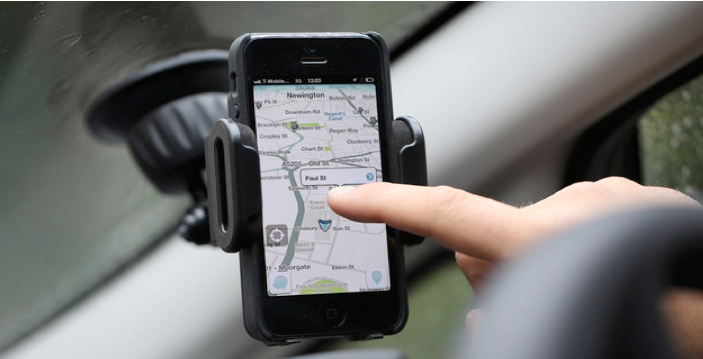CommentsGUEST COMMENTARY--The GPS navigation and social networking app Waze, which has more than 50 million users, uses nearby drivers’ alerts and real-time traffic to save you time while driving. But, as of last week it could start adding a few minutes to your commute. However, it is all under the goal of keeping you safe.
The app altered their algorithm so it no longer suggests drivers go across several lanes of heavy traffic or turn left where there aren’t any stop signs or traffic lights. Also, the app is considering a new feature, just in Brazil for now, that would direct users around certain neighborhoods that are deemed unsafe, even if that route is faster.
The new crime function of the app is being developed after a woman was murdered in Brazil when Waze led her to a neighborhood known for gang violence. But, how does Waze define a dangerous neighborhood? They say they using crime data so that the crime app is based on facts instead of biases. However, others argue that crime data is often unreliable.
If Waze is leading enough people away from certain neighborhoods, then that could have an impact on how many people visit that neighborhood, buy products in that neighborhood, like gas and groceries, and their general thoughts and biases toward the neighborhood and its inhabitants. All these things add to inequities between neighborhoods. Waze says they are working with local police and community members to correctly identify neighborhoods’ level of safety. Their hope is to have the crime feature added in Brazil before the 2016 Olympic Games.
Although these new features are designed to increase safety, Waze can still be extremely distracting for drivers. First launched in Israel, it lets you chat with nearby drivers, see traffic reports from other Waze users and chart your own route. Then it provides real-time navigation and alerts you to nearby congestion, car accidents, speed traps, construction zones, potholes, stalled vehicles and/or unsafe weather conditions. The app does have a safety feature built in to ask if there is a passenger with you who is using the app, but you have to wonder how many people say yes even when they’re alone. If they engage in the chat feature, they are essentially texting while driving, which is illegal in California and over 30 other states.
Police departments have also voiced disapproval for the app, which they say undermines their efforts to enforce safety because drivers are alerted to their presence. It also may be a safety issue for policemen, if someone wants to target law enforcement. Waze lets their location easily be known. However, WAZE disagrees with law enforcement about both of these issues, of course.
Waze has also been an issue for neighborhoods that were once quiet areas, free of major traffic. The app is known for leading users through side streets to avoid usually congested highways and major roads. Neighborhood residents are complaining of decreased quality of life because of noise pollution from cars and safety hazards for children playing outside because their neighborhood streets are becoming race tracks for the inpatient driver.
So while traffic apps, like Waze, may be a godsend to the overstressed driver with a long commute, it doesn’t come without consequences that are affecting people’s quality of life. The new safety features may help to prevent accidents in the U.S. and maybe violence in Brazil, but data is not kept on traffic accidents or violence that happen when using Waze so we won’t know for sure.
The bottom line is that traffic congestion is a real issue that needs to be addressed with safe and relatively convenient commuting alternatives, like biking and trains. But until that happens, remember that if you use these apps, nothing replaces common sense.
(UCLA Center for Health Advancement’s mission is to supply evidence-based information to key policy decision-makers in California and around the country. This perspective was posted originally at UCLA Center for Health Advancement.) Prepped for CityWatch by Linda Abrams.
Sidebar
Our mission is to promote and facilitate civic engagement and neighborhood empowerment, and to hold area government and its politicians accountable.

 CityWatch Los Angeles
Politics. Perspective. Participation.
CityWatch Los Angeles
Politics. Perspective. Participation.
13
Sat, Dec













